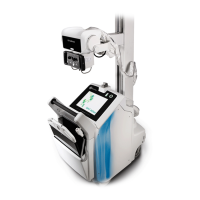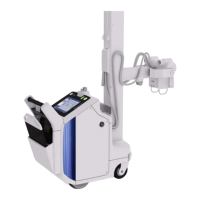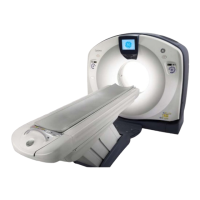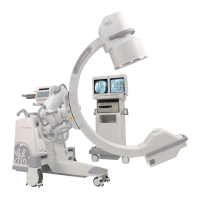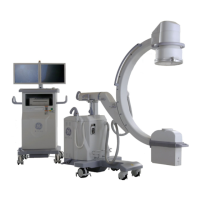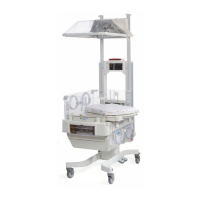Chapter 13: Advanced Applications
5495975-1EN Rev.9 13-2
© 2013-2017 General Electric Company. All rights reserved.
General Guidelines
Dual Energy acquisition and processing algorithms are optimized for Chest AP/PA and Abdomen AP/PA
on adult patients. Use of Dual Energy imaging on other anatomical views and/or pediatric patients may
result in degraded image quality.
For Dual Energy acquisitions, it is particularly important for the patient not to move or breathe during the
exposure. Excessive whole-body patient motion can result in residual rib contrast in the soft-tissue
image.
The Prep/Expose button should be released only after the end of the second exposure beep. Beware that
sometimes for large patients, the two beeps merge into one and you hear one long beep. Release the
Prep/Expose button after the beep ends.
Technique Settings and Image Quality for Chest Exams
Patient Size
The selection of appropriate patient-size setting is needed for:
correct patient dose allocation between the two exposures
optimal image quality
The recommended thickness ranges are:
Small Adult - when the patient measures less than 22cm.
Medium Adult - when the patient measures between 22cm and 27cm.
Large Adult- when the patient measures more than 27cm.
High kVp
Can be set anywhere between 110 and 150. This is usually set to that of the standard (non-DE) chest pro-
tocol/technique.
Low kVp
Can be set anywhere between 60 and 80. In general, a lower low-kVp (default is 60) will result in better
“tissue cancellation”. However, for large patients, slightly increasing the low kVp (e.g., to 65 or 70) may
improve x-ray penetration and consequently improve the noise characteristics of the resulting soft-tissue
and bone images.
Copper Filtration
Can be set to 0, 0.1 mm, 0.2 mm, or 0.3 mm. In general, less filtration will result in better “tissue cancella-
tion”.
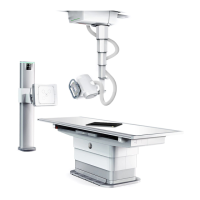
